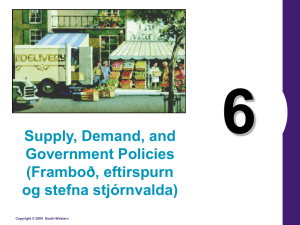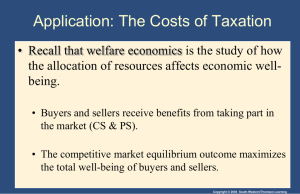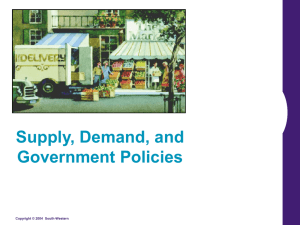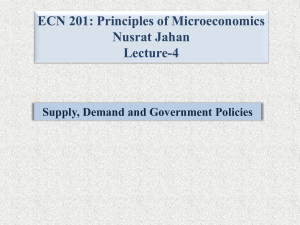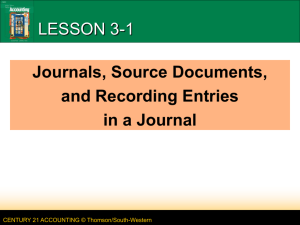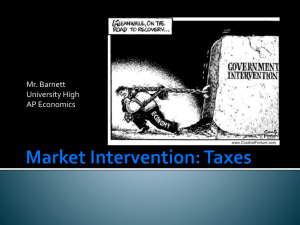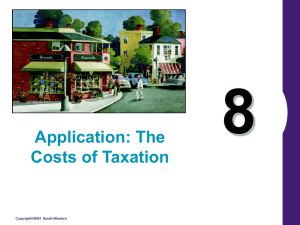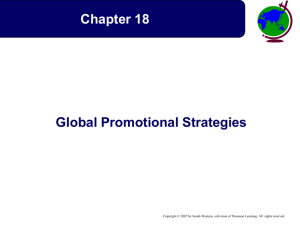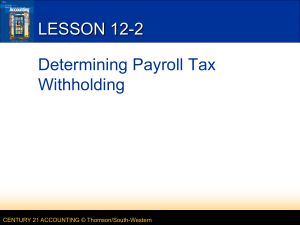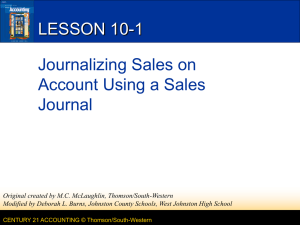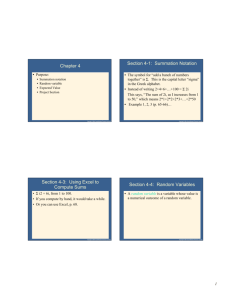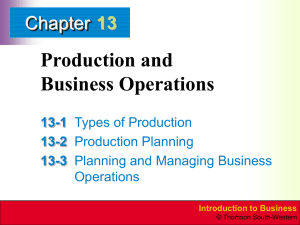Chapter Six
advertisement
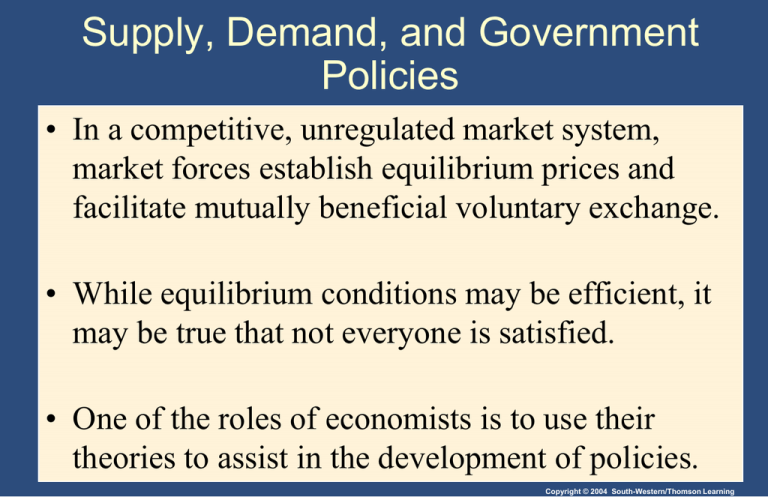
Supply, Demand, and Government Policies • In a competitive, unregulated market system, market forces establish equilibrium prices and facilitate mutually beneficial voluntary exchange. • While equilibrium conditions may be efficient, it may be true that not everyone is satisfied. • One of the roles of economists is to use their theories to assist in the development of policies. Copyright © 2004 South-Western/Thomson Learning CONTROLS ON PRICES • Price controls are usually enacted when policymakers believe the market price is unfair to buyers or sellers. • Price Ceiling: Rent Control (apartment rental) • A legal maximum on the price at which a good can be bought and sold (designed to help buyers). • Price Floor: Minimum Wage (labor) • A legal minimum on the price at which a good can be bought and sold (designed to help sellers). Copyright © 2004 South-Western/Thomson Learning How Taxes on Buyers (and Sellers) Affect Market Outcomes • Governments levy taxes to raise revenue for public projects. • Gasoline, Cigarettes, Alcohol, Food, Labor • Governments also levy taxes to discourage certain activities. • Gasoline, Cigarettes, Alcohol, Food, Labor Copyright © 2004 South-Western/Thomson Learning Elasticity and Tax Incidence • Tax incidence is the study of who bears the burden of a tax in a market (split burden). • Placing a tax in a market changes the equilibrium price(s) and quantity. • Compared to the competitive market equilibrium outcome: • Buyers pay a higher price, sellers receive a lower price. • Fewer units are bought and sold. Copyright © 2004 South-Western/Thomson Learning Elasticity and Tax Incidence • How do taxes affect sellers and buyers? • How is the burden split? • How much revenue is raised? • The answers to these questions depend on the price elasticities of demand and supply. Copyright © 2004 South-Western/Thomson Learning ELASTICITY AND TAX INCIDENCE So, how is the burden of the tax divided? • The burden of a tax falls more heavily on the side of the market that is less elastic. Copyright © 2004 South-Western/Thomson Learning Summary • Price controls are government regulated prices. • A price ceiling is a regulated maximum price of a good or service such as rent control. • A price floor is a regulated minimum price of a good or a service such as a minimum wage. Copyright © 2004 South-Western/Thomson Learning Summary • Taxes are used to raise revenue for public projects and also to discourage certain activities. • When the government levies a tax in a market, the equilibrium quantity of the good falls. • A tax in a market creates a wedge between the buyer’s price and the seller’s price. Sellers receive a lower price and buyers pay a higher price. Copyright © 2004 South-Western/Thomson Learning Summary • The incidence of a tax refers to who bears the burden of a tax. • The incidence of a tax depends on the price elasticities of supply and demand. • The tax burden tends to fall more heavily on the inelastic side of the market. Copyright © 2004 South-Western/Thomson Learning


